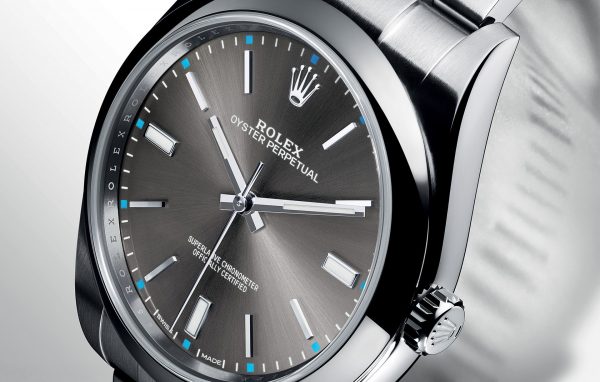Mechanically-powered watches have never achieved the consistent, nearly 100% accuracy that is found in electronic movements. Most first-time buyers are unaware of this fact.
“I spent $5,000 on a watch that can’t even keep time properly!?!”
That’s absolutely right. The first lesson of buying a luxury watch: a $20 digital Casio is going to keep much better time and require far less maintenance than a $20,000 automatic Audemars Piguet. The average mechanical watch is expected to gain or lose up to 10 seconds per day. Depending on the brand and how well the watch is maintained, most mechanical watches will require servicing or repair every 3-5 years. This is simply the nature of mechanical movements. With Swiss luxury watches, you’re not paying for the accuracy. You’re paying for the name, the prestige, and the craftsmanship of world-class mechanical watchmaking.
In a rather facetious manner, our friends over at Chronocentric address this common complaint:
“While some people desire wristwatches with extremely high accuracy over long periods of time, it is seldom for any reason besides personal satisfaction. The few professions that depend on precision time synchronization (such as astronomy, global navigation, train scheduling, and broadcasting) base their operations on high precision time sources, not consumer wristwatches. Ultimately, if you are living so close to the edge that having your watch off perfect time by less than a minute bothers you or otherwise throws your life into disarray, you probably need less caffeine and a vacation!”
 There’s a fine line between fondness and addiction!
There’s a fine line between fondness and addiction!
Since mechanical watchmaking is so painstakingly difficult and tedious, the cost of manufacture is high. There have been recent attempts at making mechanical movements more affordable by removing the human component in the manufacturing process, however, a vast majority of mechanical watchmaking is still carried out by watchmakers. Only the best, most prestigious, and successful watchmakers invest their resources into making the most accurate mechanical movements. The top two competitors in the game are Rolex and Omega.
Rolex’s newest movements feature their infamous stamp that reads: “Superlative Chronometer Officially Certified”. This certification involves testing through the Swiss Chronometer Testing Institute (Contrôle Officiel Suisse des Chronomètres – COSC) and an in-house, rather secretive form of testing. Watches bearing this description boast an astounding + or – 2 seconds per day. This is unheard of in an automatic or manual winding movement. With this feat, Rolex currently holds the world record for most accurate mechanical watch movement to-date.
 The Rolex Oyster Perpetual 39 114300
The Rolex Oyster Perpetual 39 114300
Not to be outclassed, Omega has ventured into it’s newest horological innovation: the Master Chronometer movement. These movements, in addition to being certified through the COSC, are also certified by Swiss Federal Institute for Metrology (METAS) – a government agency dedicated to the scientific study of measurement. While Chronometer certification certifies the accuracy of each movement design, the METAS certification certifies the accuracy, water resistance, and anti-magnetic resistance of each individual timepiece. The process is so meticulous that you can even verify your individual watch’s test results on Omega’s website. Although Omega hasn’t broken the world record for the most accurate mechanical movement, they’ve done just about everything else you could ask for in the quality assurance department.
 The Omega Constellation Globemaster 130.33.39.21.03.001
The Omega Constellation Globemaster 130.33.39.21.03.001
Interested in buying (showing off) some of the best timepieces the world has to offer? You can find our Rolex and Omega specials at the links below!
